
Comments

Built in 1971, this is now number 23 on the list of tallest buildings in Pittsburgh. The architects were the venerable Chicago firm of A. Epstein and Sons.
To make a more realistic-looking rendition of the building than is optically possible, old Pa Pitt adjusted the perspective on two planes. This adjustment has comical effects on the background, but the main subject looks natural now.

The Keenan Building, designed by Thomas Hannah for the Colonel Keenan who had built the Press into the city’s leading newspaper, was elaborately decorated. Although the shaft was modernized somewhat half a century ago, most of the decorations remain, and among them we find portraits in terra cotta of people who were considered important to Pittsburgh when the building was erected in 1907.

William Penn, the Proprietor, who gave Pennsylvania a republican form of government.

William Pitt, friend of the Colonies, for whom Pittsburgh was named.

George Washington, Father of His Country.

Stephen Foster, at the time Pittsburgh’s most famous composer.

Mary Schenley, who owned half the city and donated Schenley Park.

Andrew Carnegie, who was a big deal.

Theodore Roosevelt, President of the United States.

Edwin Stuart, Governor of Pennsylvania.

George Guthrie, Mayor of Pittsburgh.

There are faces on the second floor as well, but they are identical decorative faces.
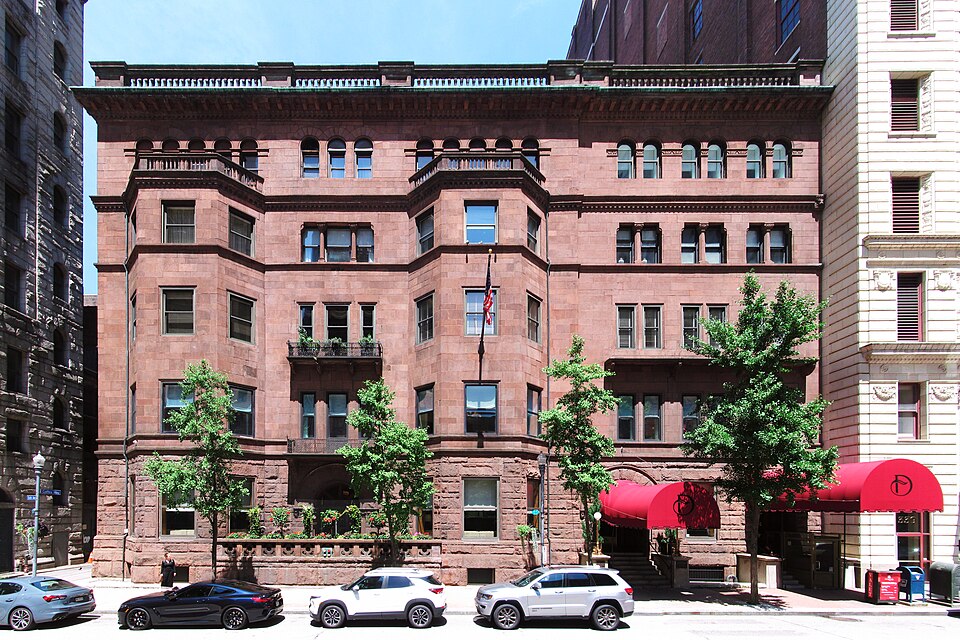
One of the first commissions for the new firm of Longfellow, Alden & Harlow in Pittsburgh was the Duquesne Club, which is still Pittsburgh’s most prestigious club. The brownstone Renaissance palace was put up in 1887–1889 and expanded later. Above, a composite picture made from six individual photographs.
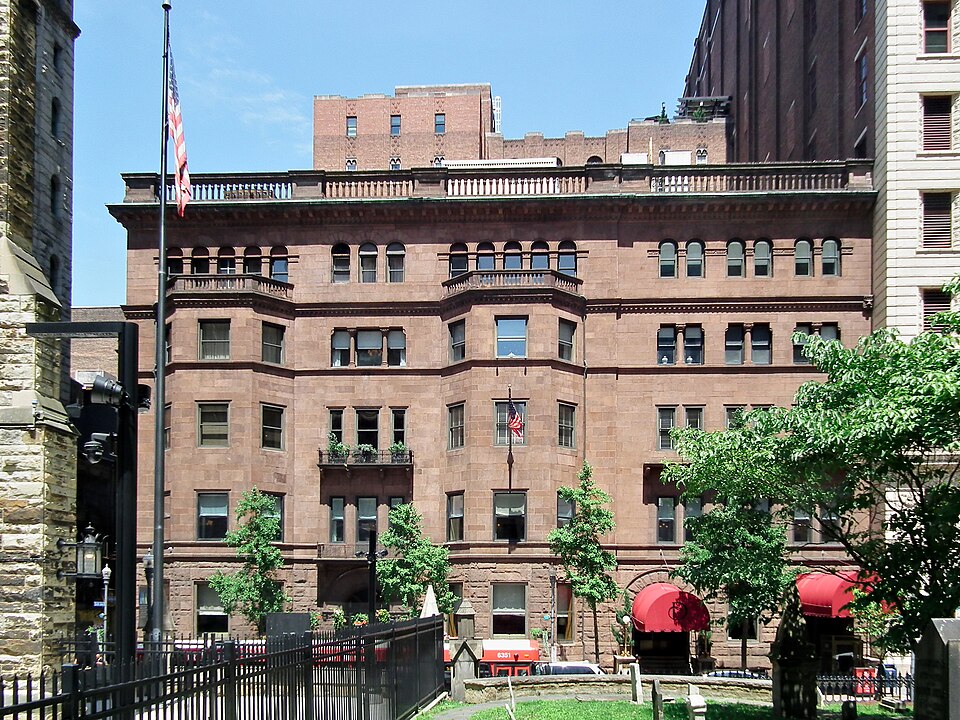
The Duquesne Club seen from Trinity Churchyard.
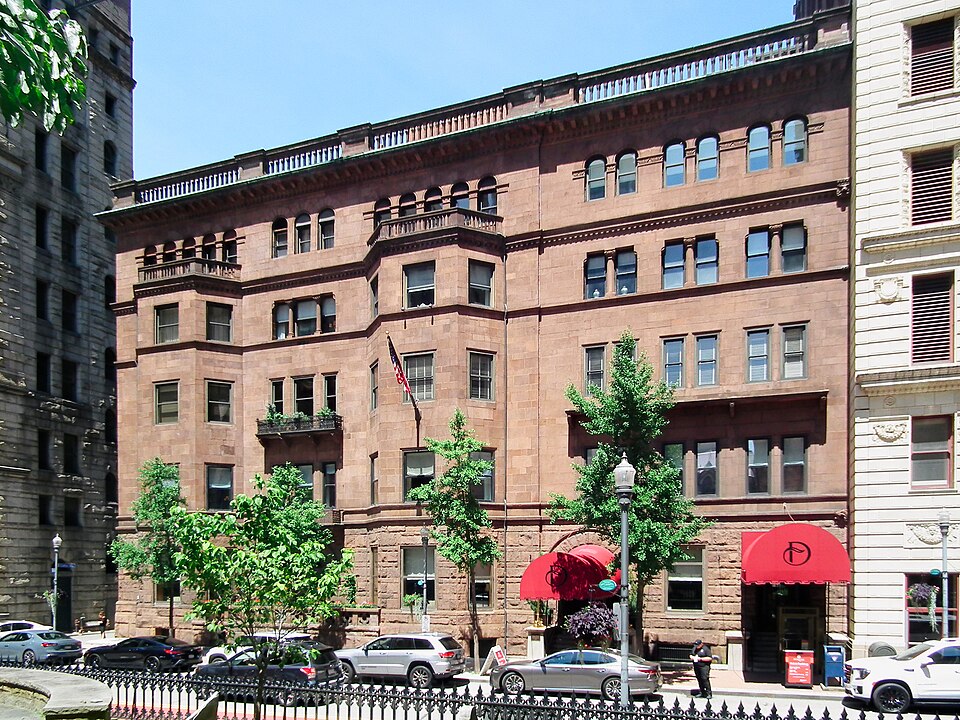
From the front of Trinity Cathedral.
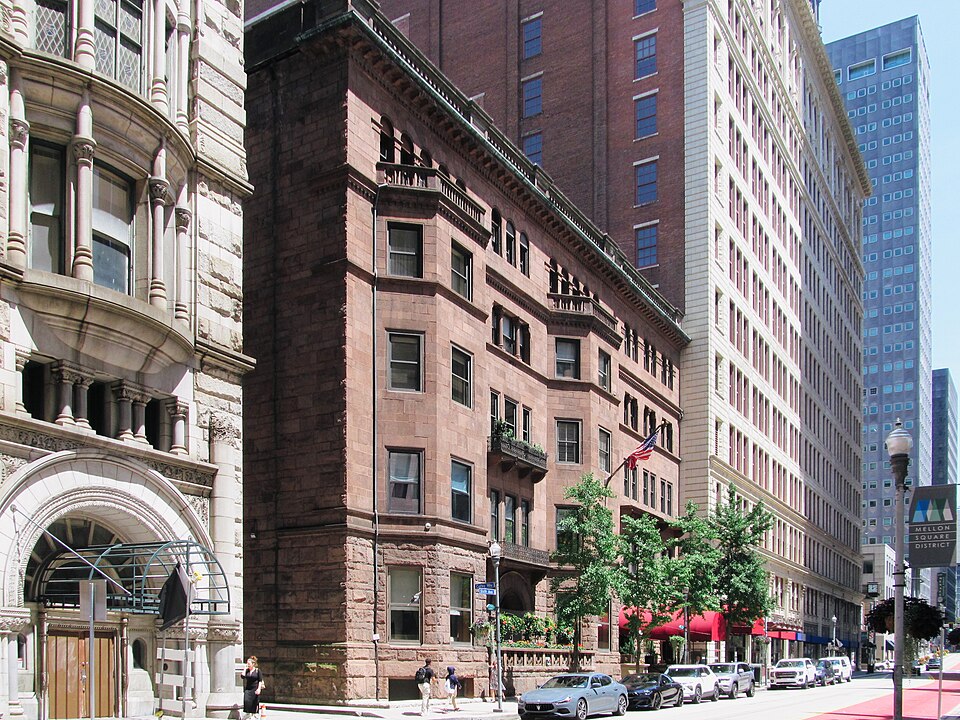

Yesterday we spoke of the busways as bus rapid transit done right. Here we see it done…the other way. The new University Line will be what counts as “bus rapid transit” in most other cities: there will be dedicated lanes for the buses most of the way, but they will have to deal with traffic lights and dozens of at-grade intersections to get from downtown to Oakland.

Nevertheless, this will be leagues better than what we have now to get from downtown to Oakland, which is stacks of buses tied up in rush-hour traffic. Instead of street corners with little signs sticking out of poles to mark them as bus stops, we’ll have these sharp-looking stations, which will provide some shelter from the rain and a few amenities like farecard vending machines and emergency telephones. (Can you get emergency cat videos on those emergency telephones?) Here are two of the nearly complete stations downtown: Market Square, which is a short block from the Diamond, and Wood Street, which is right across the street from the Wood Street subway station.
Addendum: A correspondent pointed out what we neglected to mention: that traffic lights at intersections will be synchronized to let buses pass through expeditiously. This is an important detail, and it is certainly true that it will make the system considerably swifter than it would be if the buses had to wait for the usual cycles. We reiterate that this will be much better than what we have now. Father Pitt would prefer a subway, but he doesn’t always get what he wants, and he is grateful for what he does get.
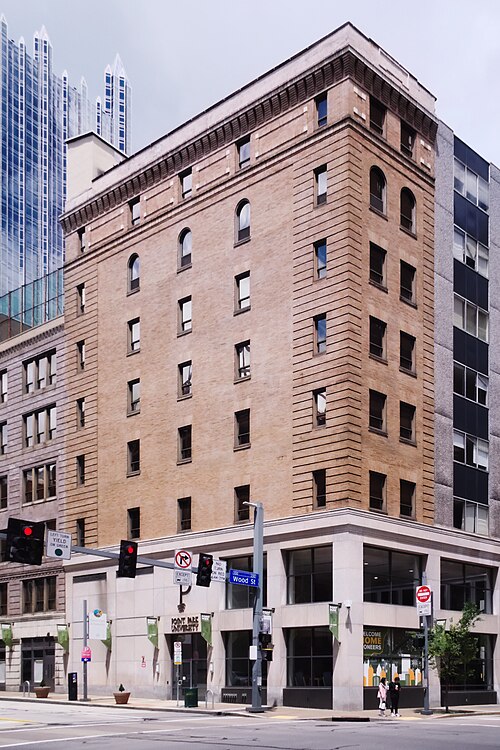
Rutan & Russell designed this building for a hardware company that had already been on this corner—Wood Street and Second Avenue (now the Boulevard of the Allies)—for sixty years when the new building opened in 1907.1 It belongs to Point Park University now, and it is so thoroughly integrated with the buildings around it that most people probably pass it by without noticing it. But it is a unique survivor, as we’ll learn in a moment.
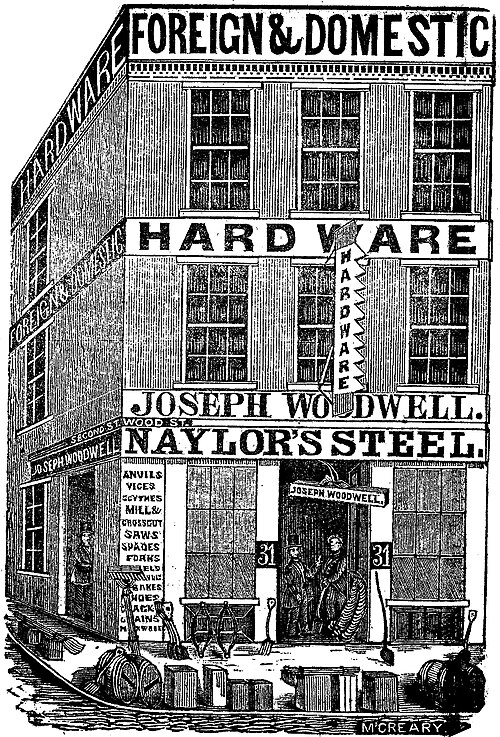
The first Joseph Woodwell hardware store was opened in 1847, and it looked like the engraving above, which was published in Fahnestock’s Pittsburgh Directory for 1850.
A larger building was put up only ten years after the first one, and then this small skyscraper in 1907. Obviously the company was prospering, and it would continue to prosper for quite a while. The frontispiece to a Joseph Woodwell catalogue from 1927 shows us the all the Woodwell buildings up to that date.
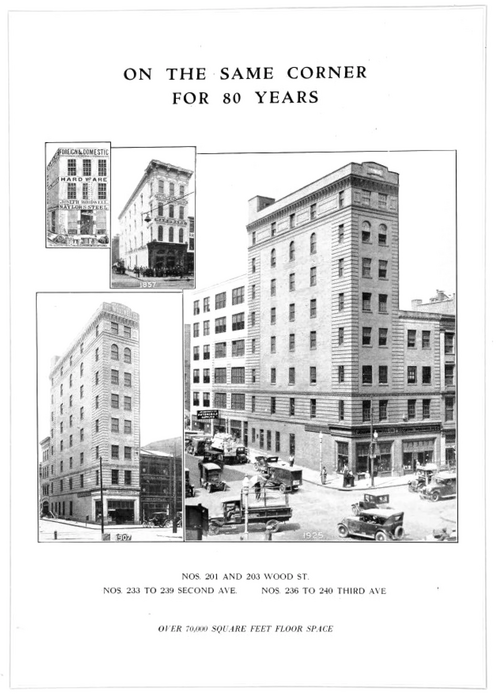
You notice the main Woodwell Building in a picture from 1907, and then the same building surrounded by newer construction in 1927. But although it’s the same building, it’s not in the same place.
Until 1920, Second Avenue was a narrow street like First Avenue or Third Avenue—streets that would count as alleys in most American cities. But in 1920, when the Boulevard of the Allies to Oakland was being planned, the city began widening Second Avenue by tearing down all the buildings on the north side of the street.
All but one. The Woodwell Building was not demolished: instead it was moved, all eight floors of it, about forty feet to the right. That makes it the sole surviving complete building on the north side of the street from before the widening project. (The Americus Republican Club survived in a truncated form.) The building gained a four-floor addition (now replaced with a more modern building) to the right on Wood Street, and yet another new building went up for the prospering Woodwell firm behind the relocated building on the Boulevard of the Allies.
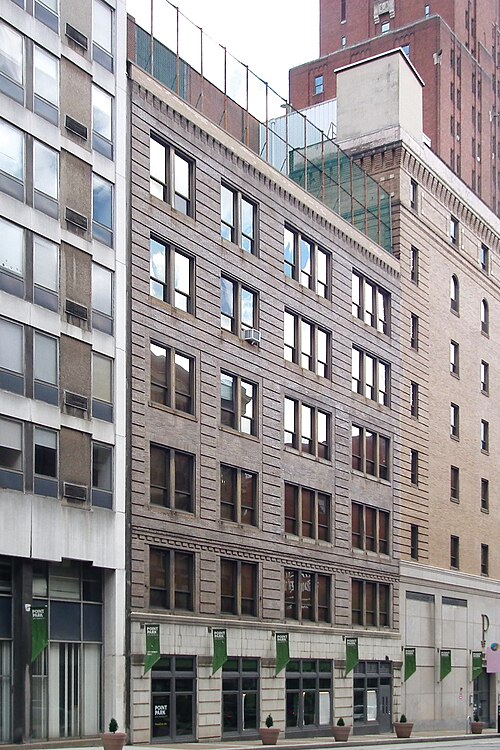
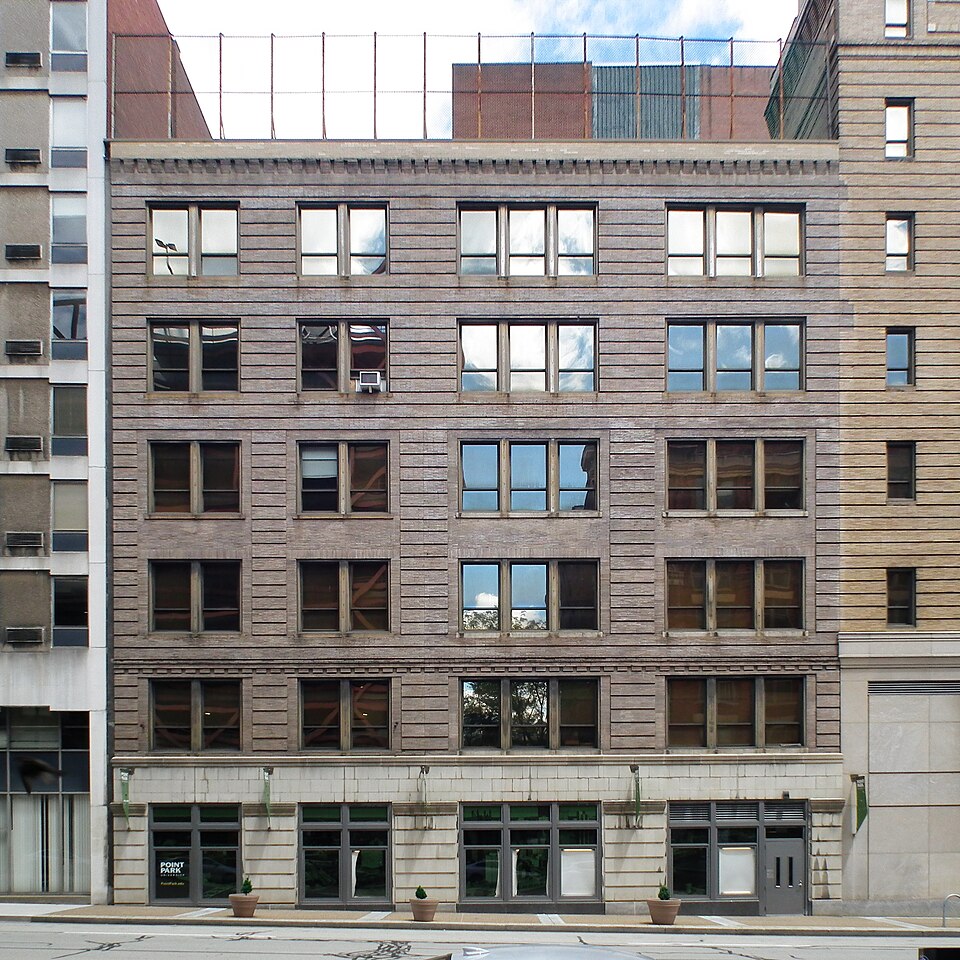
So the next time you walk down the Boulevard of the Allies, pause briefly to acknowledge the Woodwell Building. It’s a stubborn survivor as well as an attractive design by one of our top architectural firms, and it has earned some respect.
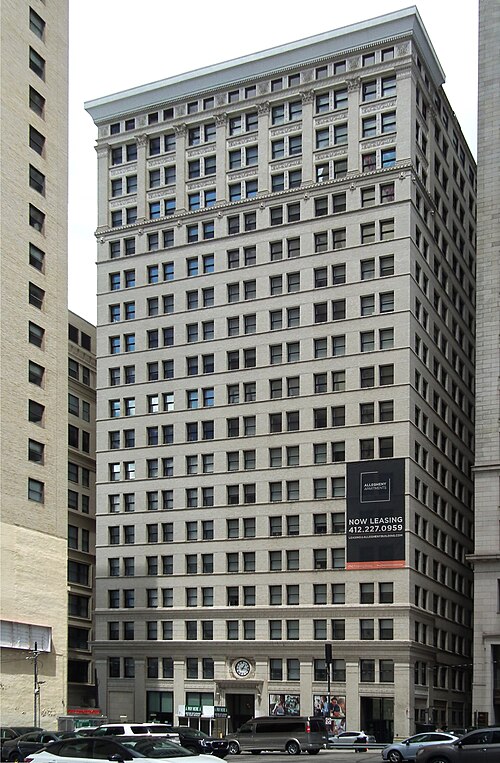
Built in 1906, this skyscraper was designed by Daniel Burnham, architect of the neighboring Frick Building, as the second part of Henry Frick’s architectural tantrum that cut off the light and air from the Carnegie Building. The Carnegie Building was demolished to make way for the nearly windowless Kaufmann’s Annex; this building, which gets plenty of light, is now luxury apartments.
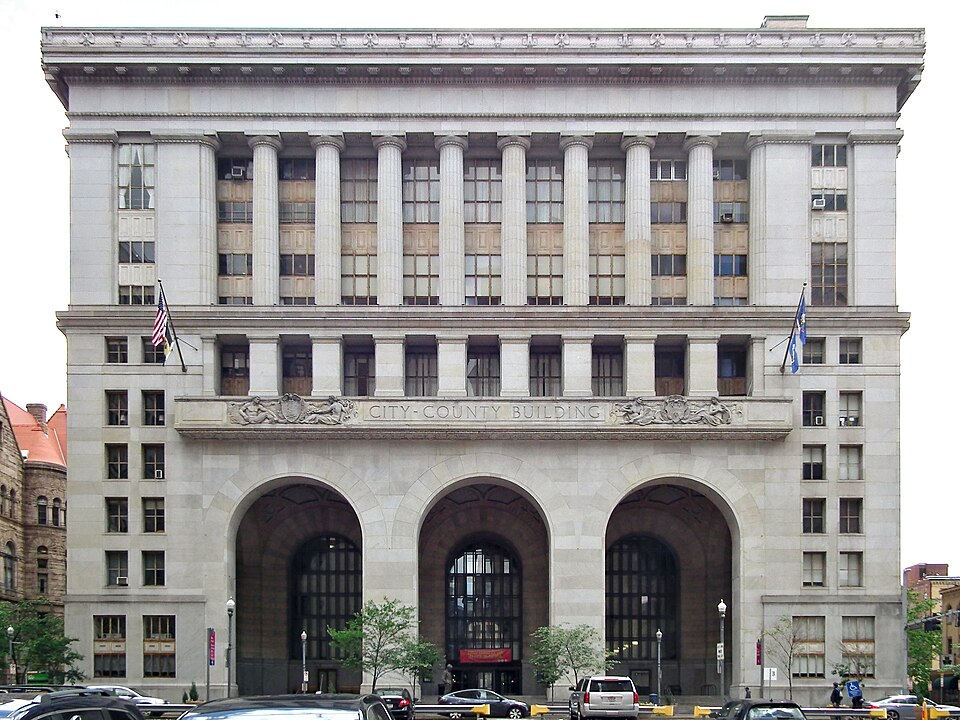
Edward B. Lee won the competition for the design of the City-County Building in “association” with Palmer & Hornbostel. Lee’s was the name in the headlines, and Lee was the only architect mentioned in the ordinance ratifying the results of the competition. But years later Lee explained that the design was Henry Hornbostel’s, with Lee just executing drawings from Hornbostel’s design. As flamboyant as he could be, Hornbostel was also generous and encouraging to his colleagues.
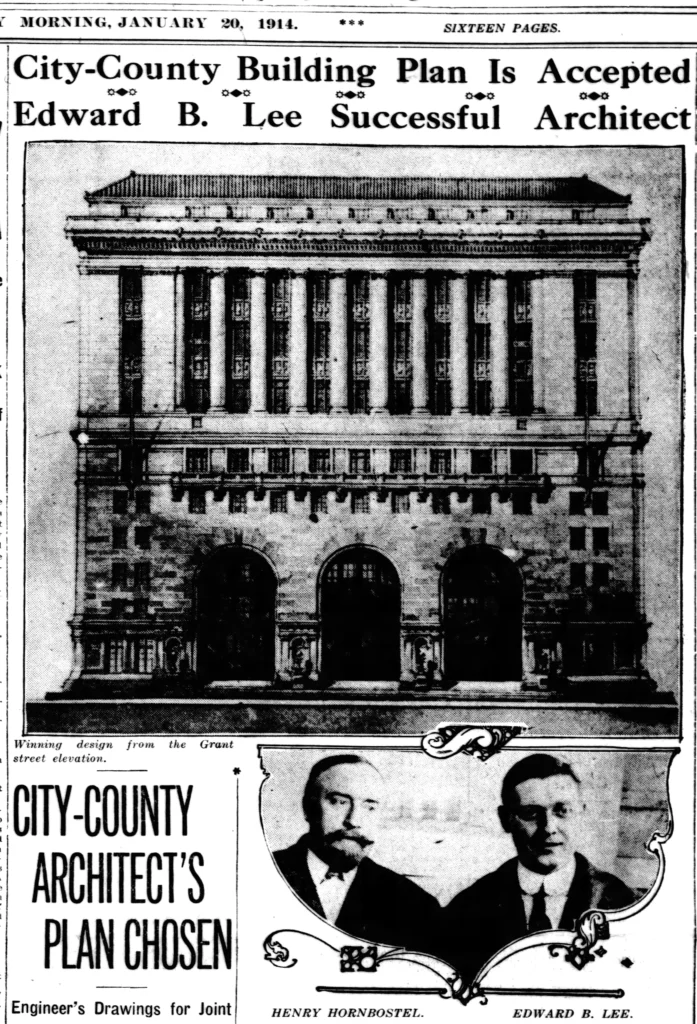
But old Pa Pitt has a suspicion that there might be more to the story than mere generosity.
In 1904, Hornbostel had won the competition for the Carnegie Tech campus, beating—among others—the famous Cass Gilbert.
In 1907, Hornbostel had won the competition for Soldiers and Sailors Hall, beating—among others—Cass Gilbert.
Now he was entering another really big competition, and the judge was Cass Gilbert, who had been selected to “prepare and conduct” the competition.1 Perhaps Hornbostel calculated that his design would have a better chance with somebody else’s name on it.
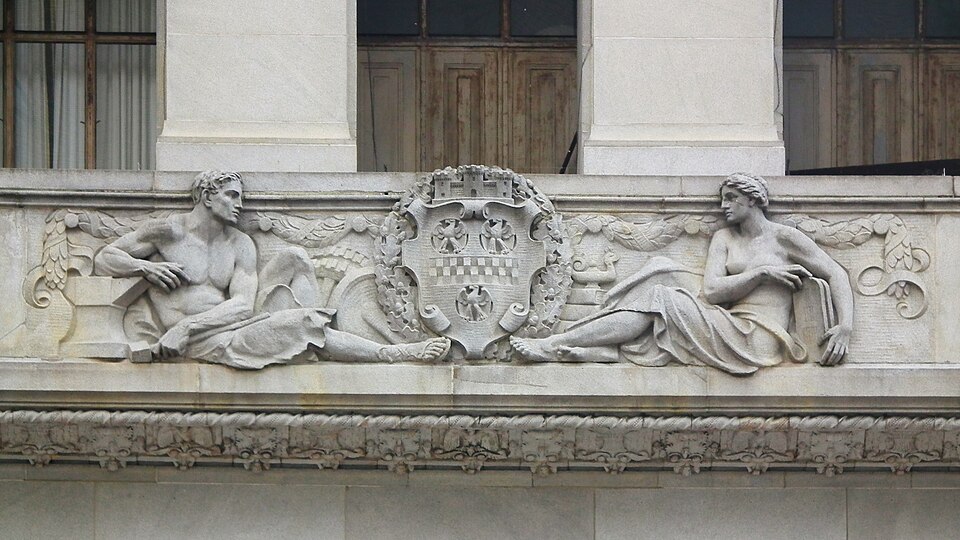
Reliefs by sculptor Charles Keck depict the arms of the City of Pittsburgh (above) and the County of Allegheny (below). Keck also contributed sculptures for Soldiers and Sailors Hall.
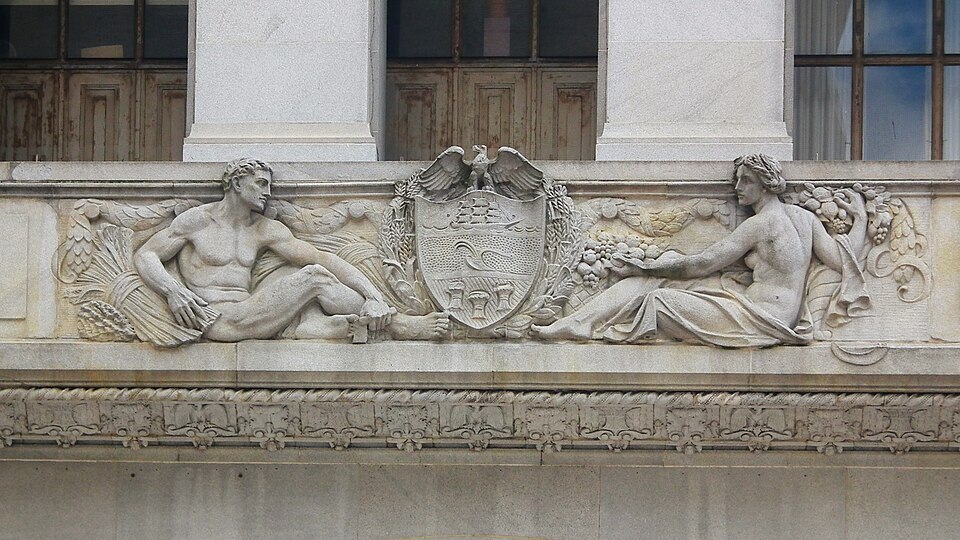
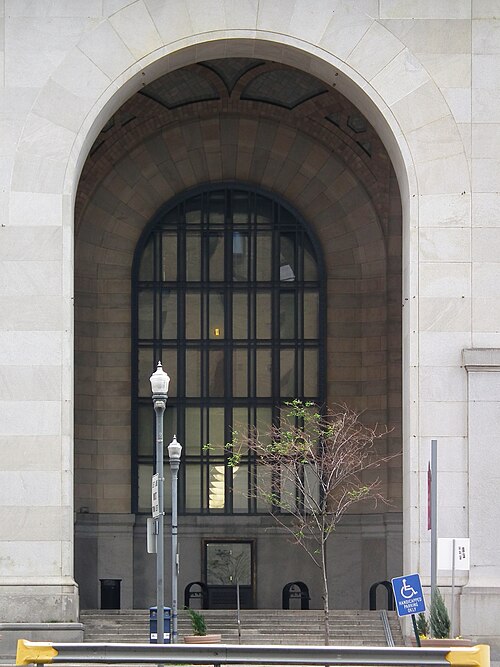
The three enormous arches are the most distinctive features of the building. Comparing the preliminary elevation above with the finished building, we can see that they were made even larger later on in the planning.